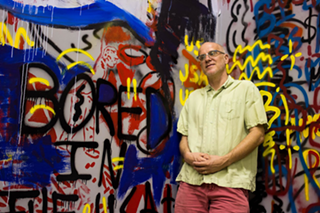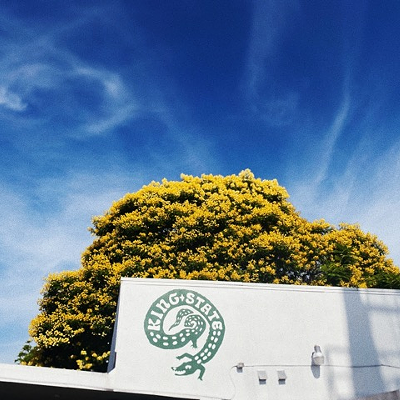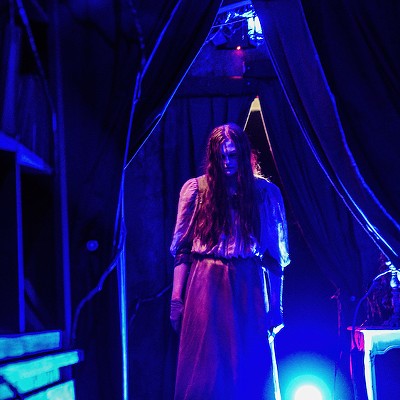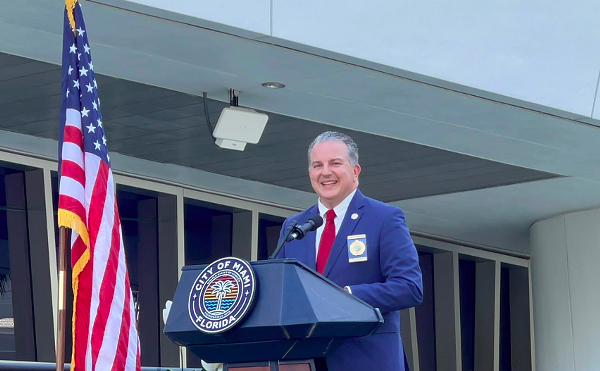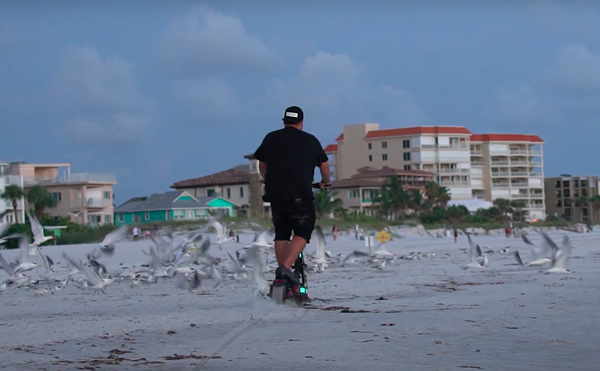A creek with no name: Boyd Hill Nature Preserve captures the true paradox of Florida
City Wilds
By Thomas Hallock on Mon, Mar 21, 2022 at 4:20 pm
I have a favorite spot at Boyd Hill Nature Preserve, our cherished patch of wildness in south St. Petersburg. I visit as often as I can (and still then, not enough). I like to walk halfway across the bridge over the Willow Marsh Trail.
The view captures what I most appreciate about the city. An ever-expanding skyline in the distance and Lake Maggiore framing a perfect, February blue sky. The marsh below teems with life. Egrets, ibis, and long-legged waders fish the shallows. Moorhen nudge the duckweed. Cooters are common, as are rabbits and gators.
St. Petersburg specializes in this confluence of condos and alligators, high art and cold-blooded wilderness. We live in a city where you can hear Brahms at the Mahaffey Theater on Saturday night, and the next morning, get eaten by an apex predator. Boyd Hill captures the true paradox of Florida.
And this paradox contains contradictions. The willow marsh (over which the bridge crosses) is fed by a stream to the south. Visitors pass this stream right after they pay their trail fee, just before the aviary. The creek does not appear on trail maps (nearby soccer fields do) and has no identifiable name. It is blocked off, near the service entrance, by a chain link fence.
A waterway disappears at the nature preserve.
I've always wanted to explore this creek with no name—which feeds the lake, then Salt Creek, then Bayboro Harbor, Tampa Bay, and the Gulf. Maya Burke, a Pinellas native and bona fide Friend of Boyd Hill, lives nearby. She thinks a lot about watersheds; her day job is assistant director for the Tampa Bay Estuary Program (the Tarpon Tag folks). She likes to wade this stream with her son and she offered to trace its course with me. Kira Barrera, who works for the city and volunteers with the Sierra Club, agreed to join us.
I could not ask for more intrepid, informed guides. (They had the good sense to secure city permission for this morning's adventure.) Maya leads Kira and me to the 14th hole of the St. Pete Country Club, just south of the preserve. Here, sheet flow and a once-winding stream have been engineered into a series of water hazards. Here, the creek does not mean much more than a one-stroke penalty and a lost two-dollar ball. "Nature on a leash," the huckster marvels in Sunshine State, teeing off the great John Sayles film.
Maya points out the southernmost impoundment, where the water's path is sculpted around fairways and greens. We note the absence of any buffer between the artificial pond and manicured grass. The country club mows right up to the edge—so golfers do not lose their shot? Clippings and who-knows-what-else run off the course, into the creek, then the Gulf of Mexico. In just a few months, red tide will eat up this junk.
The creek connects.
When we step into the open culvert, we find more than our share of lost Titleists.
Just past the golf course, the stream runs by a hidden neighborhood with some of the best mid-century modern architecture in the entire city. My friend Tanya, who died a few years back, used to live here in a converted bird cage home. Maya and her family own a Harvard-Jolly bunker, designed by the same firm who did our city's once-landmark inverted pyramid pier.
Because the creek's banks remain in private hands, the erosion control is uneven. Invasive taro and ginger dominate. Along her property, Maya proudly points out leather fern and cypress, which shade a culvert where otters den. Tidal creeks make ideal fisheries, she points out. "If we all took up a creek like this," Maya notes, the entire region would benefit.
Instead we get fragmentation. At Country Club Way, I crawl on all fours under a concrete bridge. The shallow water races over sand and Corbicula, an invasive mollusk, notorious for clogging pipes. Scientists and policy experts measure the global damage of this bivalve in the billions. Around the Ocklawaha, a friend tells me, the Corbicula has concretized so thickly that no other mollusk can reach bottom.
Just outside the preserve (granted permission!), we duck under the chain link fence. On city property, the creek's character changes. Thick fronds of leather fern, beautyberry, maple, and cypress replace the taro and ginger.
Perspectives shift when walking a stream.
Here below the familiar trails, the creek opens onto new vistas. Park landmarks appear unexpectedly. We wade past the aviary and an outdoor classroom where I take my USF students for nature writing classes. For the first time, I walk under the bridge by the Visitors Center.
Past the parking lot, then an underutilized stone amphitheater, the tangle of leather ferns widens into a vine-covered, cypress floodplain.
Maya, Kira, and I deliberate our next step. From here the stream will merge into marsh, where gators nest. A boardwalk looms in front of us. The remainder is cypress (mostly dry, because the level of Lake Maggiore is kept low).
We agree to take the boardwalk, now joining other civilians for the usual Sunday hike. We nod hello to the birders, families, and occasional mountain bikers, as we wind our way to the Willow Marsh Bridge. We are off the creek, back on designated "Nature Preserve." But the question of a forgotten stream remains. If a little rivulet has no listed name, does one care for it less? What should we call the stream that runs through Boyd Hill? Little Salt Creek? Willow Branch? Fairway Ditch?
How many other unnamed streams await our exploration? Let us know. Tell us your story about an undervalued or invisible waterway. For what is Tampa Bay, but the sum of culverts, spring runs, brooks feeding rivers, and creeks with no name?
Thomas Hallock teaches English and Florida Studies at the University of South Follow. He and Amanda Hagood have teamed up for the #creekshed project, stories in Creative Loafing about the human and natural lives that feed into Tampa Bay.
The view captures what I most appreciate about the city. An ever-expanding skyline in the distance and Lake Maggiore framing a perfect, February blue sky. The marsh below teems with life. Egrets, ibis, and long-legged waders fish the shallows. Moorhen nudge the duckweed. Cooters are common, as are rabbits and gators.
St. Petersburg specializes in this confluence of condos and alligators, high art and cold-blooded wilderness. We live in a city where you can hear Brahms at the Mahaffey Theater on Saturday night, and the next morning, get eaten by an apex predator. Boyd Hill captures the true paradox of Florida.
And this paradox contains contradictions. The willow marsh (over which the bridge crosses) is fed by a stream to the south. Visitors pass this stream right after they pay their trail fee, just before the aviary. The creek does not appear on trail maps (nearby soccer fields do) and has no identifiable name. It is blocked off, near the service entrance, by a chain link fence.
A waterway disappears at the nature preserve.
I've always wanted to explore this creek with no name—which feeds the lake, then Salt Creek, then Bayboro Harbor, Tampa Bay, and the Gulf. Maya Burke, a Pinellas native and bona fide Friend of Boyd Hill, lives nearby. She thinks a lot about watersheds; her day job is assistant director for the Tampa Bay Estuary Program (the Tarpon Tag folks). She likes to wade this stream with her son and she offered to trace its course with me. Kira Barrera, who works for the city and volunteers with the Sierra Club, agreed to join us.
I could not ask for more intrepid, informed guides. (They had the good sense to secure city permission for this morning's adventure.) Maya leads Kira and me to the 14th hole of the St. Pete Country Club, just south of the preserve. Here, sheet flow and a once-winding stream have been engineered into a series of water hazards. Here, the creek does not mean much more than a one-stroke penalty and a lost two-dollar ball. "Nature on a leash," the huckster marvels in Sunshine State, teeing off the great John Sayles film.
Maya points out the southernmost impoundment, where the water's path is sculpted around fairways and greens. We note the absence of any buffer between the artificial pond and manicured grass. The country club mows right up to the edge—so golfers do not lose their shot? Clippings and who-knows-what-else run off the course, into the creek, then the Gulf of Mexico. In just a few months, red tide will eat up this junk.
The creek connects.
When we step into the open culvert, we find more than our share of lost Titleists.
Just past the golf course, the stream runs by a hidden neighborhood with some of the best mid-century modern architecture in the entire city. My friend Tanya, who died a few years back, used to live here in a converted bird cage home. Maya and her family own a Harvard-Jolly bunker, designed by the same firm who did our city's once-landmark inverted pyramid pier.
Because the creek's banks remain in private hands, the erosion control is uneven. Invasive taro and ginger dominate. Along her property, Maya proudly points out leather fern and cypress, which shade a culvert where otters den. Tidal creeks make ideal fisheries, she points out. "If we all took up a creek like this," Maya notes, the entire region would benefit.
Instead we get fragmentation. At Country Club Way, I crawl on all fours under a concrete bridge. The shallow water races over sand and Corbicula, an invasive mollusk, notorious for clogging pipes. Scientists and policy experts measure the global damage of this bivalve in the billions. Around the Ocklawaha, a friend tells me, the Corbicula has concretized so thickly that no other mollusk can reach bottom.
Just outside the preserve (granted permission!), we duck under the chain link fence. On city property, the creek's character changes. Thick fronds of leather fern, beautyberry, maple, and cypress replace the taro and ginger.
Perspectives shift when walking a stream.
Here below the familiar trails, the creek opens onto new vistas. Park landmarks appear unexpectedly. We wade past the aviary and an outdoor classroom where I take my USF students for nature writing classes. For the first time, I walk under the bridge by the Visitors Center.
Past the parking lot, then an underutilized stone amphitheater, the tangle of leather ferns widens into a vine-covered, cypress floodplain.
Maya, Kira, and I deliberate our next step. From here the stream will merge into marsh, where gators nest. A boardwalk looms in front of us. The remainder is cypress (mostly dry, because the level of Lake Maggiore is kept low).
We agree to take the boardwalk, now joining other civilians for the usual Sunday hike. We nod hello to the birders, families, and occasional mountain bikers, as we wind our way to the Willow Marsh Bridge. We are off the creek, back on designated "Nature Preserve." But the question of a forgotten stream remains. If a little rivulet has no listed name, does one care for it less? What should we call the stream that runs through Boyd Hill? Little Salt Creek? Willow Branch? Fairway Ditch?
How many other unnamed streams await our exploration? Let us know. Tell us your story about an undervalued or invisible waterway. For what is Tampa Bay, but the sum of culverts, spring runs, brooks feeding rivers, and creeks with no name?
Thomas Hallock teaches English and Florida Studies at the University of South Follow. He and Amanda Hagood have teamed up for the #creekshed project, stories in Creative Loafing about the human and natural lives that feed into Tampa Bay.

WE LOVE OUR READERS!
Since 1988, CL Tampa Bay has served as the free, independent voice of Tampa Bay, and we want to keep it that way.
Becoming a CL Tampa Bay Supporter for as little as $5 a month allows us to continue offering readers access to our coverage of local news, food, nightlife, events, and culture with no paywalls.
About The Author
Thomas Hallock
Thomas Hallock is Professor of English at the University of South Florida St Petersburg. He is currently writing a book of travel essays about why he loves teaching the American literature survey, called A Road Course in American Literature...
Scroll to read more Tampa Bay News articles
Newsletters
Join Creative Loafing Tampa Bay Newsletters
Subscribe now to get the latest news delivered right to your inbox.


